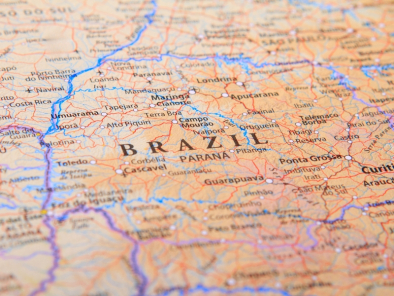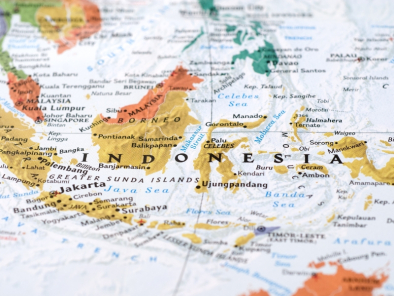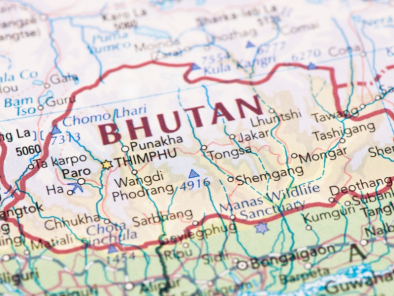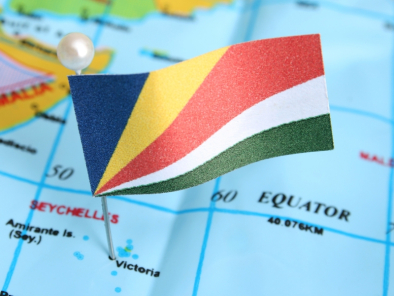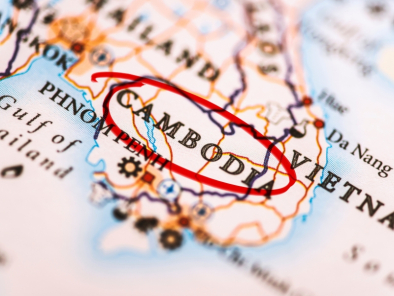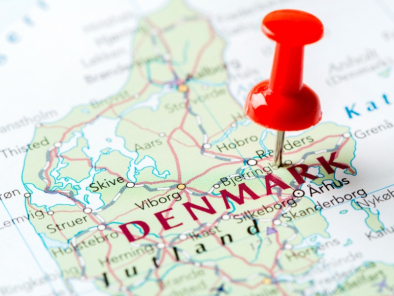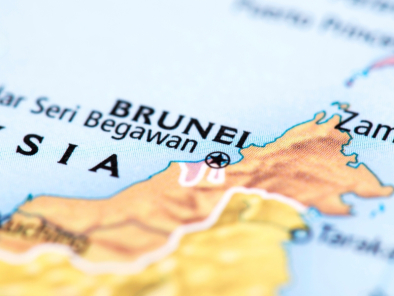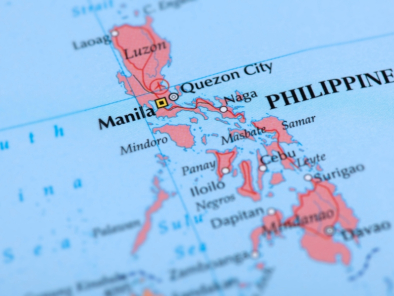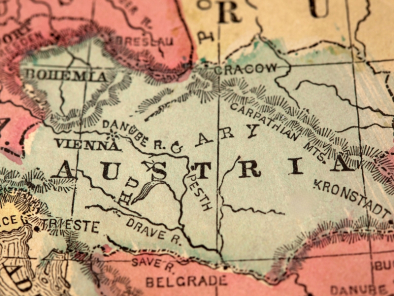Brazil
Brazil as a nation is
unusually blessed. Five thousand miles of coastline -- some of it packed with
cafes and partygoers, but long stretches blissfully empty. Rainforests and
wetlands teem with exotic critters. Some of the oldest cities and civic architecture
in the New World (and one of the newest cities
in the entire world) are here. Restaurants match the snobbiest standards, with
regional cuisines that have yet to be discovered in culinary capitals like New York or L.A. Music
lovers could make Brazil
a lifetime study. And let's not forget a little thing called Carnaval.
GEOGRAPHY
Brazil occupies
nearly half the continent of South America and
is the fifth largest country in the world. The Atlantic
Ocean runs along its entire eastern coast, where two-thirds of its
population lives. Ruled by Portugal
since the 1500s, Brazil
is the only country in the whole continent that speaks Portuguese; all its
neighbours speak Spanish.
VISA: The visa is to
be obtained prior to arrival in the country.
CURRENCY:
Brazilian currency is the REAL (BRL), divided into
centavos; 100 centavos = 1 real
1 USD= 1.78 BRL
1 BRL = 22.11 INR
Foreign currency can easily be
exchanged in bureaux de change and banks, available in the city centre, at
transport hubs and tourist sites. Dollars (USD) usually obtain the most favorable
exchange rate and some establishments accept them as direct payment for
services.
GETTING
AROUND
Air:
Air service connects all major areas
of Brazil. Note that not all air routes are as direct as they would seem on a
map, and are often required to go through hubs such as Brasilia or Sao Paulo.
Bus:
Long-distance buses are a convenient,
economical, and sometimes (usually if you buy the most expensive ticket),
rather comfortable way to travel between regions. Bus terminals in cities play
a role akin to train stations in many countries.
Brazil has a very good bus transport system, basically, long distance routes
depart from capital cities or economical centers, so if the city is big it will
have connections to neighbouring capitals at the very least. One can expect
just about any town to have a bus route to the capital or a regional economic
center. Generally speaking bus tickets are bought at bus terminals at the end
points or at the scheduled stops along the route.
Train: Brazil's railway system was mostly wrecked during the
military regimes. Today there are few passenger lines left
Car hire:
It is generally accepted that tourists should not hire cars in Brazil unless
they know what they're doing! Road safety in Brazil is not the best in the world,
and the standard of driving here leaves a lot to be desired. However, there are
a number of car hire agencies operating in Brazil, so if you want to rent a car
here it is feasible. But, do travel/drive with a good map and plenty of water.
Bicycle: In rural areas in Brazil the bicycle is a common means of
transport. This does not mean that cyclists are respected by car, truck, or bus
drivers. But you may find good roads with little traffic outside the cities. It
is also easy to get a lift by a pickup or to have the bike transported by a
bus. Cycling is not very stimulated in big cities. Three exceptions are Rio de
Janeiro, Recife and Fortaleza where there are cycle tracks along the beaches.
Boat: In the Amazon region as well as on the coast west of Sao Luis,
boat travel is often the only way to get around. Those who enjoy a little more
adventurous form of transportation might want to consider taking one of the
boat ferries through some of the most spectacular, dense, vegetation in Brazil
aboard a boat/ferry. Boats and ferries in Brazil traditionally trade their
wares along the inland waterways of Brazil, and if you have time this is a
recommended mode of Brazilian transportation.
BUSINESS HOURS
Most
shops In Brazil are open from 9 am - 6:30 or 7 PM, weekdays, and from 9 am - 1
PM on Saturdays. Some shops may close earlier, and many shopping centers stay
open as late as 10 PM. Banks open from 10 am - 4:00 PM, Monday - Friday, in
most parts of the country with small regional variations. In some regions,
shops may also close for lunch.
CLIMATE
Brazil’s
climate varies according to latitude and elevation.
Seasons
are opposite to those in the Northern Hemisphere; winter is June-September and
summer November-March. On average, the temperature during summer ranges from 25
to 40°C (75~100°F).
Warm
tropical weather extends north from Rio de Janeiro throughout most of the year.
South of Rio – São Paulo, Santa Catarina, Paraná and Rio Grande do Sul states –
the climate is generally of warm summers and cold winters, with occasional
snowfall in the far south.
CLOTHING
Casual
wear is normal, particularly during hot weather. In nightclubs, smart-casual
(eg blazer, no tie) is acceptable. For men, coats and ties are common in Sao
Paulo and Brasilia as well as some formal business situations. For women,
slacks or skirts with a blouse, or dresses are common and acceptable, although,
a dress or skirt may prove to be much cooler.) If you are traveling to the
south of the country, in the winter (June/July), it is worth taking an extra
layer, or something warm, as the temperature can be quite cool.
TIME
Brazil is 7 hrs and 30 mins behind India
ELECTRICITY
Brasilia
and Recife, 220 volts AC; Rio de Janeiro and Sao Paulo, 127 volts AC or 220
volts in larger hotels. Plugs are of the two-pin type. Most hotels provide
110-volt and 220-volt outlets, transformers and adaptors.
DIALING
CODE +55
TIPS
In
most restaurants and bars a 10% service fee is added to the bill. More
sophisticated places may add on 15%. If service is not included it will be
stated at the bottom of the bill: “Servicio nao incluido”. Taxis do not expect
a tip, but it is normal to round up the final price.
LANGUAGE
Portuguese
is the official language in Brazil.
However English is taught in many Brazilian schools
FOOD
The
cuisine from Bahia dates back to the time of
slavery when the masters saved scraps from the table or leftovers from the
previous day's meal to give to the slaves. Some slaves were allowed to fish and
look for shrimp and clams. Remembering their cooking-pot training from Africa, the women would put bits of ingredients together
and add the milk of coconuts or the oil from the dendê palm. Over the years
these concoctions were worked out in recipes and were given names. Today it is
called Bahian food. Some of its delicacies are:
Vatapá:
Shrimp are either cut up or ground together with pieces of fish, then cooked
with dendê palm oil, coconut milk and pieces or bread. The dish is served over
white rice.
Sarapatel:
The liver and heart of either a pig or a sheep are mixed with fresh blood of
either animal; tomatoes, peppers, and onions are added and everything is cooked
together.
Carurú:
Sauteed shrimp are combined with a very sharp sauce made of red peppers and
tiny okra.
In
the Amazon region a favorite dish is pato no tucupi which is pieces or duck in
a rich sauce that is loaded with a wild green herb that tingles the stomach for
hours after eating. Another typical dish is tacacá, a thick yellow soup that is
laced with dried shrimp and garlic.
In
Rio Grande do
Sul churrasco is the big dish. It is pieces of beefs skewered onto a metal
sword, and roasted outdoors over hot coals. There is a tomato and onion sauce
to go over it. The gaúchos of the interior barbecue an entire steer this way.
If
there is one dish that typifies Brazilian cooking it is feijoada. In Rio de Janeiro, where it
is especially popular, feijoada is a complicated bean dish prepared with
air-dried beef, smoked sausage, tongue, pig's ears and tails, garlic, and chili
peppers. It is customary to fill a soup plate with white rice and spoon
feijoada on top. Over this is added pulverized manioc flour (farofa), a starch
that thickens the sauce. The whole dish is garnished with collard greens and
slices of oranges.
Drink
Many
international travellers think Brazilian beer is one of the best in the entire
western hemisphere.
For
generations there have been expert German and Dutch brewers overseeing the
manufacturing and processing of all major companies.
Brazil produces a
powerful, clear, raw rum (cachaça) made from fermented sugar cane alcohol.
Cachaça combined with crushed lime, sugar, and ice becomes a very popular drink
called caipirinha. Guaraná, a delicious soft drink unique to Brazil, is made
out of a fruit from the Amazon.
Water: You are
strongly advised not to drink tap water
whilst in Brazil.
Drink only bottled or filtered water
BRAZIL OVERVIEW
Named after brazilwood, (pau-brasil) an indigenous
tree highly valued by early colonists, Brazil is home to both extensive
agricultural lands and rain forests. There are several ecological parks and
extremely varied ecosystems: the tropical forest in the Amazon, the stunted
vegetation in the northeast, the Atlantic
Forest in the southeast,
the vast marsh lands of the Pantanal in the mid-west and the pampas in the
south.
People are the essence of the country, and while Brazil is home
to a multitude of ethnic groups of varying economic status, there are some
characteristics that everyone shares � energy and passion. Much of the life of
any Brazilian revolves around family�both immediate and extended. Brazil has the
largest Catholic population in the world and the most members of Asian
religions in the Western world.
Brazilians are sun worshippers and love spending
time at the beach. They also like music and dancing and celebrate with many
fiestas. Carnaval is celebrated all over Brazil, with the most famous being
festivities held in Rio's samb�dromo � a
tiered street specifically designed for samba parades.
Brazil offers world class travel destinations with unique travel
experiences...
Rio de
Janeiro is the
hottest of destinations and very few places in the world match its hospitality
and natural charm. Rio is brimming with color,
sound, rhythm, and joy, which make it synonymous with Carnaval, happiness, and
beautiful people. Rio has music, nightlife,
beaches, historical sites and a spirit all its own. The locals are called
Cariocas and tend to be extravagant, the intensity with which they live life is
legendary and truly remarkable.
In the north are the major Brazilian tropical beach
resorts areas such as Recife,
Forteleza and Salvador da Bahia. Special amongst these is Bahia,
with its prevailing African culture, cuisine, music and traditions truly their
own. Here the pace and rhythm of life is very linked to history and the joy and
warmth of the people make it a unique area.
The Country�s capital, Brasilia, is renowned for its futuristic
architecture. Home to the Pra�a dos Tr�s Poderes, Pal�cio do Planalto and
the National Congress � it is the first modern cultural complex to be
included in UNESCO�s list of World Heritage monuments.
A rich colonial history exists in the town of Parati, which is an
exquisite example of eighteenth-century Portuguese architecture. Other cities
with unique cultural heritage include: Ouro Preto, Diamantina,
Sao Miguel das Miss�es, Salvador, Sao Luïos, Olinda, Cidade de Goi�s and Congonhas do
Campo.
Sao Paulo is a large, metropolis at the heart of a region with 40 million people
of varying national origins: Portuguese, Italian, Spanish or Spanish speaking
people, German, Arab, Lebanese, and Asiatic. While business dominates Sao Paulo, its museums
are among the finest in South America and the
city has become legendary for its outstanding cuisine. And, though not as
famously wild as Rio, entertainment hot spots
have attracted some of the best performers in the world.
In Manaus,
you can sense the unbelievable grandeur of the worlds largest rainforest the Amazon. Another example of a very
different Brazil
culture, the indigenous people of the forest and the (Caboclos mixed white and
Amerindian).
If you want to visit an atypical Brazil, deeply
related with European culture, choose the southern states. Here you find
folklore, traditions, music and a cuisine (with beer and wine) strictly rooted
in Europe. Blumenau�s Oktoberfest is a three
week festival, a replica of Munich�s, an event that calls more than a million
people a year, and rivals with events as Rio
de Janeiro or Salvador�s Carnivals.
The Pantanal, which is the world's largest wetland,
covers more than 365,000 square kilometers. During the rainy season, the region
experiences extensive flooding, connecting a vast array of swamps, lagoons,
backwaters and oxbow lakes and has the largest American concentration of wild
life.
Iguacu
Falls, strung out along a crescent-shaped cliff about 2.5 miles long, some 275
individual cascades and waterfalls plummet up to 269 feet into the gorge below.
The thunderous roaring can be heard from miles away. Truly a magnificent site.
RIO DE JANEIRO
Rio
de Janeiro is one of the
most spectacular cities on the planet. Even the well-traveled individuals
will love what the city has to offer. Rio de Janeiro is a large city and is not
free from the problems associated with poverty. First time travelers to Rio should be aware of their surroundings at all times
and stay away from the favelas (slums). If you can afford it, hire a driver for
your touring: not only will they keep you safe, they will also show you things you
may have missed on your own.
Leave the expensive jewelery at home and do not flash money or credit cards
around. Be a smart traveler and Rio will turn
out to be a pleasant surprise.
Schedule as much time as possible for this destination,
especially if visiting during Carnival, the greatest party on Earth!
MUST
SEE:
Corcovado Hill
From any place of the city, the visitor can
see the most beautiful postcard of Rio de
Janeiro: Christ the Redeemer statue in the mountain of Corcovado, located at 710
meters above the sea level and inaugurated in
1931.
This tour begins in Cosme Velho's neighborhood
from where the cog train starts a trip through the Tijuca Forest,
the largest urban forest in the world, up to the statue.
Once there, a panoramic and extraordinary view
of Rio will be seeing including the
Sugar Loaf, the Guanabara
Bay, the beaches of Southern Zone and the Rodrigo de
Freitas lagoon.
The best way
to reach the statue is by the funicular train, which runs daily every
half-hour from 08h30-20h00.
Approximate Duration: 4 hrs and 30 mins
Available: daily
Sugar Loaf Tour
This tour begins with a city panoramic view
through downtown Rio, passing by the
Sambodrome, the Metropolitan Cathedral, in
pyramid form, with internal diameter of
96 meters and height of 80 meters. Get to know
the traditional Cinelândia square with the historical buildings, the Municipal
Theater, the National Library and the National Museum of Fine Arts. By taking
the Aterro do Flamengo, you will be taken to the neighborhood of Urca where it
is located one of the largest symbols of the city: the Sugar Loaf. This visit
is made in two steps by cable car. The first cable car takes passengers to Urca
Hill which is 215 meters high and from where one can have a beautiful view
fromthe Guanabara Bay and its islands, the
Rio-Niterói bridge and Corcovado hill. From
this stage, a second cable car will be taken up to the top with 395 meters to
find a splendid view from Copacabana beach, the Santa Cruz fortress and some beaches of
Niterói.
The cable cars
run from 08h10-21h50 every half-hour
Approximate Duration: 4 hrs and 30 mins
Available: daily
Tijuca National Park
When
the Portuguese colonists first landed in Rio,
they found the area blanketed in lush vegetation. Today, Tijuca National Park
is all that remains of the original tropical rainforest
and represents the world's largest urban forest.
Even
this has been replanted - the area was cleared in the 18th century to make way
for a coffee plantation, but re-established as a park in the 1880s. In the
ideal growing conditions such was the success of the project that the current
forest is almost indistinguishable from virgin rainforest
- even this close to the city.
Just
15 minutes drive from Rio, the park provides a
welcome green sanctuary for visitors. Tijuca's terrain hides lakes and caves,
waterfalls and wildlife - all of which are open for exploration. Corcovado Hill
rises in the park, topped with its magnificent statue. Jeep tours can be
arranged, as can independent guides who are knowledgeable about both flora and
fauna. Expect to see such jungle denizens as monkeys, sloths and armadillos,
flora of wild-growing tropical fruit trees and abundant birdlife.
Open: daily 07h00-21h00.
Maracana Stadium
Maracana,
once the world’s greatest playground for world famous soccer stars such as
Ronaldo, Romario, Sócrates Etc... The giant stadium accommodates over
100,000 people and has been host to many championship games over the years,
including the World Cup match of 1950 and Pele's last game.
Duration: 3 hours
Copacabana
beach:
Copacabana is a borough located in the
southern zone of the city Rio de Janeiro,
famous for its 4 km beach. Copacabana
has one of the world's highest population densities, giving it a non-stop party
atmosphere. For pure city excitement, Copacabana is Rio's
liveliest. There's always something happening on the beach during the day and
on the sidewalks at night: drinking, singing, eating and all kinds of people
checking out the scene.
Ipanema Beach
It
is the city's rich area, where designer swimwear is sported on country club
sculpted bodies. The suburb is replete with upmarket bars, restaurants and
cafes where you can hang out and people-watch. The strip is divided into areas
- the city's unofficial gay beach occupies its own stretch here, while the
beach where the "Girl from Ipanema" so wowed Tom Jobim that he was
inspired to write a song about her is the hangout for arty types (Porto 9).
Favela tour
Rio may be
blessed with beautiful people and luscious scenery but it's an uncomfortable
fact that around a quarter of Rio's residents
live in shantytowns. These favelas, often built on steep hillsides, are
a strange mixture of community-minded mutual support and lawlessness,
making it inadvisable to enter any favela without an experienced guide.
Duration: 3 hours
Carnival and Samba
Schools
The
mother of all street parties, Rio's glittering
carnival is the most lavish in the country, with preparations underway for most
of the year. As musician Tom Jobim sang of Rio's
carnival addiction: "people work the entire year just for a moment's
dream".
The
samba schools, often representing a district or a favela, are busy for months
making the sumptuous costumes and rehearsing their moves. In the months leading
up to the celebrations some of the samba schools open their doors to visitors,
allowing an insight into the Cariocas' passion for partying. Carnival is
usually held in February and draws people from all over the world to Rio for the festivities. If planning to visit at this
time you have to book accommodation and transport at least a year in advance,
it is the biggest event of the year and Rio is
completely packed out.
City Museum
Rio's many
museums are replete with artworks and artifacts drawn from all over Brazil and from
all periods of its many layered history. Of those that you have to see the
foremost is the
National Historical
Museum, housed in
the 18th-century Arsenal, one of the oldest buildings in Rio.
The collection of artefacts within spans the 500-year history of the city and
its nation from militaria to the humdrum objects from the Cariocas' daily
lives.
For
art lovers, the National Museum of Fine
Arts and the Museum of Modern Art
(Infante Dom Henrique 85) together offer valuable insight into the culture of
Brazil.
Open:
12h00-18h00 (Tue-Fri) & 12h00-19h00 (Sat-Sun)
Rio may offer
bigger and better museums, but the quirky Carmen Miranda
Museum, dedicated to Brazil's most
famous chanteuse, continues to draw fans from around the world with its
collection of her outrageous costumes, old recordings, film scripts and
contracts. Miranda has become a gay icon and her wonderfully exaggerated
outfits serve as inspiration for many carnival drag queens.
Open:
Tue-Fri 11h00-17h00; Sat/Sun 14h00-17h00. Admission: free.
Guanabara Bay tour
Appreciate Rio
from the sea, its historical buildings and the forts that protected the Guanabara Bay. Built by the Portuguese in 1555, see the
Bay from a very special angle. We will sail to see the most beautiful landscape
of Rio. It is the largest bay of the world in
volume of water; it has several islands, as the Governor's island, Fundao and Snakes Island.
In the west margin we see Rio de Janeiro
and East the municipal district of Niteroi. A city vision is discovered as we
leave “Marina DA Gloria " by Saveiro, neighborhoods of Botafogo, Flamengo,
Urca, Sugar Loaf, Fort Sao Joao, Flagstone Island, Santa Cruz Fortress, and
Rio- Niteroi Bridge.
Duration: 4-5 hours
Available: daily
except Monday
Helicopter Tour
In a city blessed with natural beauty, there are places aplenty to
take in the sights of Rio. But for the most
breathtaking and heart stopping views of the city, a helicopter tour is a must.
The most popular routes take in Sugar Loaf, the statue of Christ
and Rio's famous beaches, but aerial tours of
Maracanã, the favelas and the lagoon can be arranged. Night flights are also
available, and the city takes on a magical quality when lit up. There's now a
helipad at Morro da Urca, the first stage of the Sugar Loaf.
Santa Teresa
District
Rio's most
bohemian of neighbourhoods, Santa Teresa boasts winding cobbled streets,
19th-century architecture and a host of art galleries. Local artists and
intellectuals have made this district their own, as did Great Train Robber
Ronnie Biggs before his return to England.
There
are plenty of bars and sidewalk cafés where visitors can linger and watch the
always lively streetlife at their leisure. There's also a fine art museum, the
Chácara do Céu. For a scenic trip up here take the yellow tram, o bondinho,
across the Arcos da Lapa aqueduct with its 42 arches. This tram passes the
favelas below so caution is advised.
Trams
run from Rua Prof. Lélio Gama in Centro near the Petrobras Building from
06h00-23h00.
Ferry to Niterói
Across Guanabara
Bay lies what most locals will tell you is Rio's
poor relation, the sister city of Niterói.
Linked by the 15km-long bridge, Ponte Costa e Silva, the city is home to a fine
modern art museum, which appears to hover over the bay like a spaceship, as well
as the Santa Cruz Fortress from where there are great views looking back at
Sugar Loaf.
On the return journey do as the locals
and take the slow ferry, being sure to sit up front with your camera to
capture a panorama of Rio. Ferries leave from
the docks at Praça 15 de Novembro in Centro. The Jumbo Catamaran takes around
10mins; the slower ferries take around 20mins. Both boats run daily from
06h00-20h00 (Mon-Fri); 06h00-23h00 (Sat & Sun) leaving every 15mins.
Religious Buildings and the Monastery of São Bento
Away
from the beaches and parties another side of the Carioca character can be seen
through their religious beliefs. Apart from the massive statue of Christ the
Redeemer atop Corcovado Hill, there are several religious buildings in the
city, including the Convent of St
Anthony built in 1608 and the beautiful Our Lady of Candelária Church.
Arguably
the best of the city's religious attractions is the Monastery and Church of Saint Bento
with its ornate baroque style chapel. This Benedictine monastery
was founded in 1590 by monks from Bahia.
Construction of the church began in 1617 and was completed in 1641. The
exquisite interior is richly adorned with woodcarvings. A daily mass is
accompanied by Gregorian chants that heighten the atmosphere. Rua Dom Gerardo
68, Centro. Entrance is via lift on 5/F at Rua Dom Gerardo 40. Services: daily
07h00-11h00 & 14h00-18h00. The monastery
is not open to the public.
DAY TOURS AROUND RIO:
Angra dos Reis
Come
and visit full day tour at Angra dos Reis where you will see spectacular views
from their lovely nature. Also visit magnificent buildings from the colonial
past and more. With an archipelago of more than 300 islands and countless
beaches, the town of Angra
lies in the hart of this paradise, some 130 klm south of Rio.
This spectacular view, winds over mountainous terrain covered in lush Atlantic
rain forest. Graceful coves and sandy beaches, little islands and crystal clear
water make the journey a memorable occasion.
Duration:
8 hours
Tropical Islands
Discover Rio de Janeiro's Tropical Island
where you will see different animals and plants and many more! The city of
Itacuruçá, located 1 ½ hour away from Rio de Janeiro, in the district of
Mangaratiba, has among the main activities the fishing, agriculture and tourism
and has basically simple houses of fishermen.
The Saveiro, name given to this typical boat that looks like a schooner,
cruises the Sepetiba
Bay, an area rich in
natural beauty, where it is normal to spot a flora and fauna as dolphins, giant
king-fisher, parrots, turtle and sting-rays.
A stop is made for a swim and then the saveiro continues to the island of Itacuruça. There will be time to explore
the Island before returning.
Duration: 8 hours
Available: daily
Petropolis
The
name Petrópolis means "city of Pedro";
Pedro I and Pedro II were the only two Emperors of Brazil.
At a distance of about 68 km from Rio
de Janeiro, Petrópolis is nestled about 800 meters
(2,600 ft) above sea level, on the Serra dos Órgãos.
It´s the main winter destination of people from Rio de Janeiro; Petrópolis offers a
combination of good gastronomy, comfortable hotels, the proximity of the Serra dos Órgãos and important
architectural heritage.
Things
to see:
Ancient brazilian Imperial Family’s Summer Palace;
Sao Pedro de Alcantara’s Cathedral;
Palacio de Cristal
(Cristal Palace),
Passing by the house where the inventor
of the plane, Santos Dummont, lived.
artcraft shops
Patrone Chocolate house.
Duration:
Full day
Accommodation:
If
you want to stay in Rio de Janeiro
the obvious place to head for is the beach. The only thing you really have to
decide is which one. Copacabana and Ipanema are the two major tourist areas.
Most tourists will probably end up on or near the former: the Copacabana is the
larger of the two and boasts more variety of accommodation. Ipanema caters to a
somewhat posher set and contains the gay area and bohemian beach areas of the
city. There are several other beaches around the city which are becoming
increasingly popular, perhaps most notably Barra da Tijuca
It
is advisable to have your accommodation sorted out well in advance no matter
what time you visit, Rio de Janeiro
is a popular destination year-round. No matter what hotel touts at the airport
might tell you, it's unlikely that they'll be able to get you a good quality
hotel at the drop of a hat in the city. If planning to visit during Carnival
you will have to book your accommodation more than a year in advance if you
want the full choice of hotels.
Indian
restaurants in Rio de Janeiro
Raajmahal-
Rua General Polidoro, 29,Rio de Janeiro 22280-001 Brazil
Natraj - Rua
General San Martin, 1219, Rio de
Janeiro 22441-011 Brazil
Chutneys- Beco do Mota, 34, Tijuca, Rio de Janeiro, Brazil
Prasada- Léa Cristina, Rio de Janeiro, Brazil
SAO PAULO
Sao Paulo overwhelms
the senses with its sheer size. With over 10 million inhabitants, it is the
world's third largest city and the largest in South
America.
Brazil's most
modern, cosmopolitan city has much to offer in addition to its outstanding
cuisines. Its museums are among the finest in South
America, its surrounding coastline is graced with many lovely
beaches, and its entertainment and nightlife have for years attracted some of
the best performers in the world
MUST SEE:
Pátio de
Colégio
At
first sight the Pátio do Colégio or School Yard in Portuguese, looks like a big
white school house in the middle of São
Paulo. However it's a very important landmark that
signifies where the city of São Paulo
first began. In 1554, it was originally the College of the Society of Jesus but
today it houses the Casa Achieta, the Capela de Achieta and the Achieta Museum
where a 16th century model of São Paulo is kept with accompanying panels
showing the growth of the city throughout the successive centuries.
There also historical items going back to the colonial past; sculptures, altarpieces
and paintings all housed in the museum. Make sure you see the Patio de Colegio
at night as the building is lit up like a lantern in solid white against the
dark sky as a backdrop.
Ibirapuera Park
This
a major park in the heart of São Paulo
akin to Hyde Park in London or Central Park
in New York.
The Ibirapuera Park much more than just a big open green space contains a lake
with fountains, lagoons, rent a bike facility, a Museum of Modern Art, Museum
Afro Brasil and a building shaped like a a spaceship-saucer known as the Oca
Auditorium.
A free concert is hosted every Sunday morning at the Praça da Paz. The 8pm evening show on both Saturday and
Sunday known as “fonte flutuante,” is a superb light and sound presentation
with the fountain used as a reference point.
Butantan
Institute and Museum
This
biomedical research centre is visited by almost half a million people each year
and is one of São Paulo’s
most popular attractions. Specialising in venomous animals and supported by the
government, vaccines are researched and developed here for use all over the
world.
Housed in a great building are two museums, the Butantan Museum Institute (MIB)
which is famous for its research and the Historical Museum
which specialises in serpents from around the world. Just keep an eye out for
any escaping Cobra’s slithering on the floor and you’ll be alright. Avenida
Vital Brazil
1500. Tel: +55 (0)11-3726-7222
Teatro
Municipal de São Paulo
(Municipal Theatre)
In
the new vibrant area of Centro Novo and surrounded by lush green gardens, is a
landmark of great cultural importance to São
Paulo. Under the profile of the City Department of
Culture it's home to the Municipal Symphonic Orchestra, concerts, operas, the
Paulisto Chorale and ballet performances. But visitors can only take in the
original splendour of this theatre when it's open for a show. You'll quickly
realise why its one of the most important theatres in South
America.
It features an impressive collection of mosaics, busts and bronze medallions
that are heavily influenced from the Italian Renaissance. Renovation work
completed in 1991 highlighted the architectural qualities of its external
sandstone fasçade.
Paulista Museum (Ipiranga
Museum)
The
Ipiranga Museum is an architectural landmark of
Italian neo-classicism and is the oldest museum in the city. Located in Independence Park, this regal building also has its
own gardens and a botanical garden. Originally built as a monument, it now has
a large historical collection from the 19th century featuring imperial period
displays.
Look for the Casa de Grito monument in front of the museum where Dom Pedro
uttered the "Grito do Ipiranga" as a mark of independence.
Museum de Arte
de São Paulo (Museum of Art)
Just
along Paulisto Avenue
you'll easily see a deep red building which is the Museum of Art
and one of São Paulo's
famous landmarks. Inaugurated in 1947 it's now a must see for art lovers as it
houses works by world famous artists such as Van Gogh, Picasso, Raphael,
Matisse, and Renoir.
There are 8,000 pieces visitors can peruse through with a comprehensive
collection of artwork. The Museum also contains a fantastic array of western
art found nowhere else in Latin America,
alongside their Brazilian counterparts stretching back to the 17th century. The
museum has an international reputation as one of the great museums of the world
and indeed South America.
Sala São Paulo (Julio Prestes Station)
If
you thought you could catch a train here – think again! This is the grand hall for
the performing arts. It was originally a railway station in 1926 but in 1999 a
transformation was initiated converting it into a concert hall. It has a
capacity of 1500 seats, and is the home to São Paulo's State Symphonic Orchestra.
The actual grand hall was painstakingly restored to its former glory
with the use of photographs. It now features 22 tiered balconies, an adjustable
ceiling and a seating arrangement for 1500 patrons. Make sure you check out the
Saturday afternoon concert which is reasonably priced.
Memorial do Imigrante (Memorial of the Immigrant Museum)
This
public institution is located in a stately red-brick building. It houses the
records of 3 million immigrants who entered São Paulo up until 1978. The museum itself
lives out the immigration process that settlers followed when arriving in the
admissions hall. There is also an exhibition of the various jobs they held.
It's a great way to gauge an idea of the whole experience.
The documents, photos and period furniture all add to the ambience. It’s
amazing to see how many different
nationalities passed through the cities doors in a time when
travel was a luxury.
São Bento Monasty
(São Bento's Monastery)
Built
in the late 16th century, this landmark is considered part of the very foundation
of the once small city to the sprawling metropolis it is today. It has a unique
clock tower and from a glance looks like that famous scene from Back to the
Future. In 2007 it was the host to the official visit of Pope Benedict XVI.
The Sunday morning mass is an ideal opportunity to appreciate the Gregorian hymns
sung by the choir. During the week visitors are allowed to the roof-top for a
great view of the city and surrounding area.
Edifício Itália (Italian
Building)
In
downtown São Paulo
stands this Italian landmark in honour of Italian immigrants that came to
the city. Built in 1965, this colonial building has an incredible 47-storeys
which were heralded as São Paulo’s
tallest building back then. It's built in the shape of a triangular tower with
curved corners.
Visitors are welcomed to the observation
deck on the 41st floor where you get a panoramic view of the
colossal city. There is also a bar so you can sit and enjoy the view, and a
restaurant on the floor below.
Accommodation:
There’s
no shortage of accommodation in São
Paulo, in fact it has the largest concentration of
top-rate, trend-setting hotels in Brazil. There are a large
proportion of the city’s hotels in the Centro area where budget, moderate to
luxury hotels are located along Avenida Paulista or in the Jardins
neighbourhood. Some of these hotels can be somewhat expensive as they are
centrally based and geared towards business travellers.
Wherever
you want to stay the choice of accommodation is never-ending offering European
ambience, classic luxury, value for money and extravagant lodgings.
Indian
restaurants:
Cheiro Verde- R Peixoto Gomide, 1413 Jardins, Sao Paulo,
Brazil
Ganesh- Morumbi Shopping Center, Av Roque
Petroni Jr 1089, Morumbi, Sao Paulo, Brazil
Gopala Veg- Rua Antonio Carlos, 413- Cerqueira
Cesar,Esquina C/R Agusta, a 2 Quadras da Av Paulista, Sao Paulo, Brazil
Govinda Vegetarian- Rua Princesa Isabel, 379
Brooklin, Sao Paulo, Brazil
Sattiva- R Da Consolacao, 3140, Jardins, Sao Paulo,
Brazil.
MANAUS
For those expecting to see only a sea of green of the Amazon rainforest when they fly into Manaus, the sight of a modern city with
high-rises and a busy port comes as a surprise. Located on the north bank of
the Rio Negro, 11 miles (18 km) above the
Meeting of the Rivers where the Negro merges with the Rio Solimões, Manaus is 900 miles
(1,450 km) inland from the Atlantic. It’s the heart of Amazonia and thus the
hub of tourism for the rivers, the jungle lodges and the river cruises.
Manaus sprawls, but the center
of town, the Centro where most of the hotels and attractions are located, rises
above the river on a slight hill. As the largest city and a major port on the
river, Manaus
is commercial.
Amazon
rainforest
The immense Amazon basin is known as the Earth's
"Green Lung" for good reason. The rainforest
is habitat to one third of the planet's forest and over 50,000 species of
plants, 1000 species of birds and 400 species of mammals. Twenty
percent of the world's primates live in the Amazonas region. To journey into
the Amazon, to the junction of the opaque brown Amazon and the dark Rio Negro, is to experience an ancient, wild world. Just
300 miles from Manaus,
the region's capital, live uncontacted Aboriginal Indian tribes. The pace of
life in modern Manaus
is still set by the great river. Historic buildings stand next to modern
skyscrapers in this important gateway city. The Amazon region is a magical
place full of life as it has carried on for millions of years.
